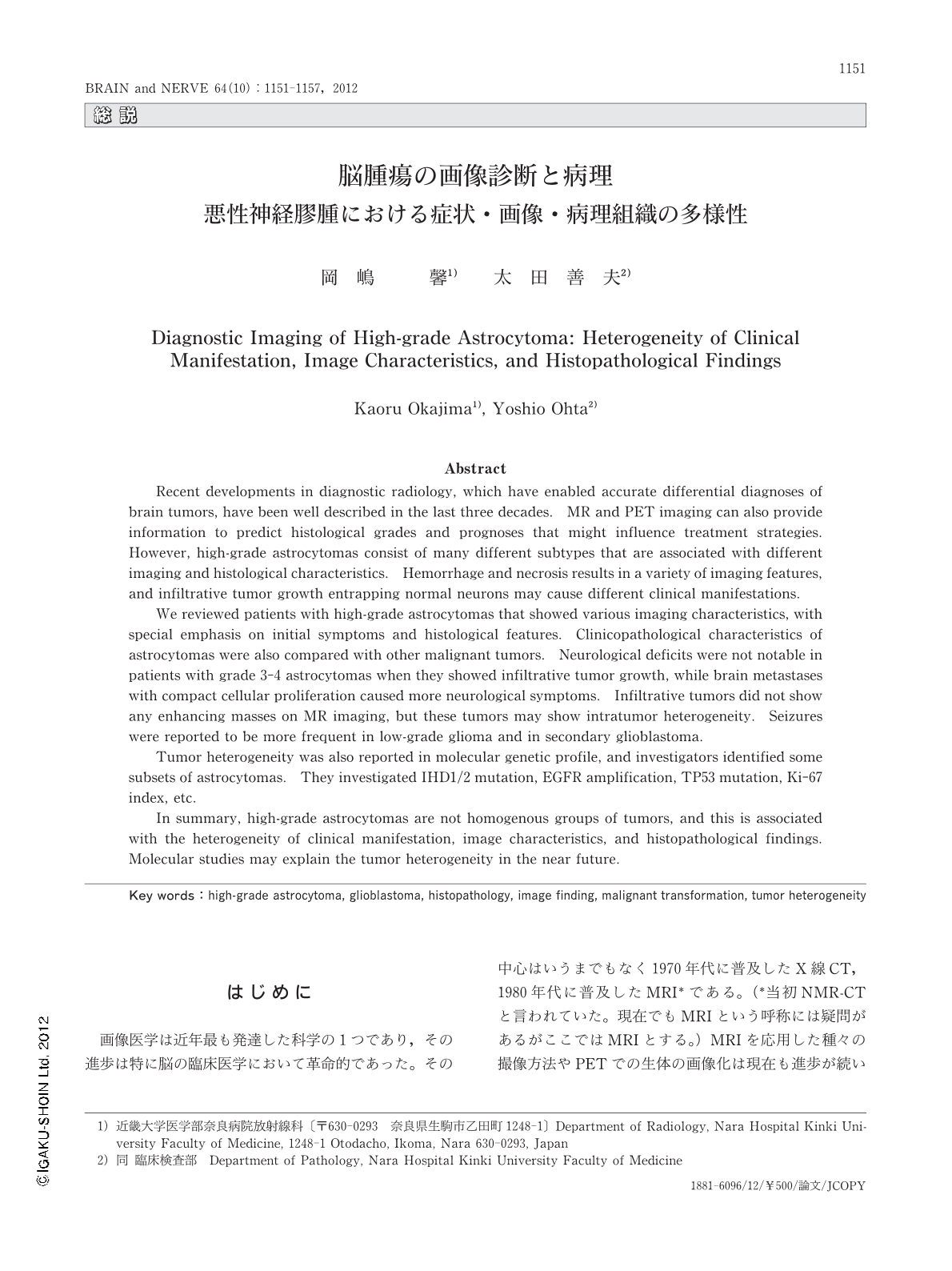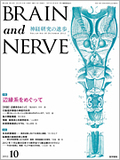Japanese
English
- 有料閲覧
- Abstract 文献概要
- 1ページ目 Look Inside
- 参考文献 Reference
はじめに
画像医学は近年最も発達した科学の1つであり,その進歩は特に脳の臨床医学において革命的であった。その中心はいうまでもなく1970年代に普及したX線CT,1980年代に普及したMRI*である。(*当初NMR-CTと言われていた。現在でもMRIという呼称には疑問があるがここではMRIとする。)MRIを応用した種々の撮像方法やPETでの生体の画像化は現在も進歩が続いており,わが国ではこれら装置が普及しているのが欧米に比べ大きな特徴である。
脳腫瘍の画像診断は主にMRIを用いて行われ,その手法は現在までにほぼ確立されている。その診断は腫瘍の存在や組織型の鑑別のみでなく,腫瘍の進展範囲や悪性度を予測して治療方法に応用することまでにも貢献している。脳腫瘍は多種に及ぶので本稿では高悪性度星状細胞腫(high grade astrocytoma)のみを対象に,典型例の画像診断と病理組織像・臨床症状との関連を考察する。
Abstract
Recent developments in diagnostic radiology, which have enabled accurate differential diagnoses of brain tumors, have been well described in the last three decades. MR and PET imaging can also provide information to predict histological grades and prognoses that might influence treatment strategies. However, high-grade astrocytomas consist of many different subtypes that are associated with different imaging and histological characteristics. Hemorrhage and necrosis results in a variety of imaging features, and infiltrative tumor growth entrapping normal neurons may cause different clinical manifestations.
We reviewed patients with high-grade astrocytomas that showed various imaging characteristics, with special emphasis on initial symptoms and histological features. Clinicopathological characteristics of astrocytomas were also compared with other malignant tumors. Neurological deficits were not notable in patients with grade 3-4 astrocytomas when they showed infiltrative tumor growth, while brain metastases with compact cellular proliferation caused more neurological symptoms. Infiltrative tumors did not show any enhancing masses on MR imaging, but these tumors may show intratumor heterogeneity. Seizures were reported to be more frequent in low-grade glioma and in secondary glioblastoma.
Tumor heterogeneity was also reported in molecular genetic profile, and investigators identified some subsets of astrocytomas. They investigated IHD1/2 mutation, EGFR amplification, TP53 mutation, Ki-67 index, etc.
In summary, high-grade astrocytomas are not homogenous groups of tumors, and this is associated with the heterogeneity of clinical manifestation, image characteristics, and histopathological findings. Molecular studies may explain the tumor heterogeneity in the near future.

Copyright © 2012, Igaku-Shoin Ltd. All rights reserved.


